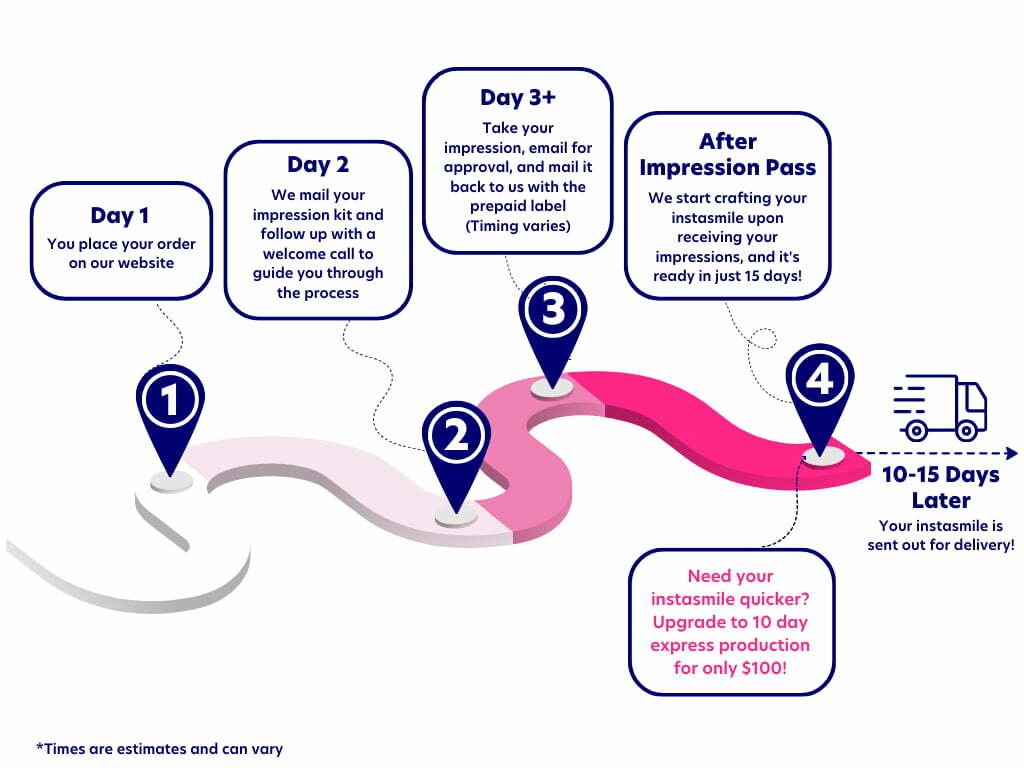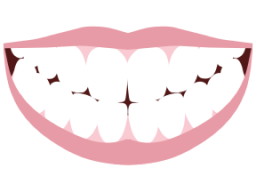Tooth Bonding at Home | instasmile snap-on veneers
Teeth Bonding Alternatives
Seeing edited pictures online, and celebrities on the red carpet with perfect smiles has made us all feel like we need cosmetic dentistry to give us an A-lister smile. Those with chips, gaps, and discoloration can therefore have lower self-confidence, leading to them avoiding smiling altogether! One popular treatment to correct these common concerns is dental bonding. It’s relatively noninvasive and gives patients a boost they need to take on each day with confidence. But, is it all it’s cracked up to be? The instasmile team reveals all.

What is teeth bonding?
Dental bonding is a procedure where the dentist applies composite to each tooth to cover cracks, chips, discoloration, and other dental insecurities. It can be applied to just one tooth, or multiple teeth, and is shaped to create a natural enhancement. Tooth bonding is favoured by patients as it doesn’t require anesthesia or multiple trips to the dentist, meaning it’s a nice and easy procedure when you compare it to the likes of dental veneers.

The Procedure Dental Bonding Procedure
To begin with, your dentist will ensure they have chosen the best shade for the teeth by comparing various resin shades and ensuring it matches the color of your teeth closely. In some cases, whitening will be performed first if you require a brighter white finish. Your dentist will roughen the surface of the tooth, and then apply a bonding agent that allows the material to stick to the tooth. The composite resin is then applied over the liquid, the tooth is molded and shaped, and then it is all hardened with an ultraviolet light. Your dentist can continue to shape the tooth after the resin has hardened if they need to. Dental bonding tends to give an extremely natural finish, unlike veneers where the result can sometimes be too uniform and blocky. Bear in mind that if Invisalign braces and whitening are required, then multiple trips to the dentist over a period of months will be needed to ensure that the teeth are aligning as they should be before the treatment can take place. It all depends on a patient's personal treatment plan and the results required.

When is Dental Bonding Needed?
Dental bonding is a good choice for those who have imperfections and defects in their teeth that they would like to cover up and fix without extensive, complicated surgery and procedures requiring anesthetic. For instance, some people with cracked and discolored teeth opt for dental bonding to give a more uniform, perfect appearance. However, it can also be used for those who would like to close small gaps between their teeth. This is a treatment that can be used for those who simply want to tweak and enhance their natural teeth. It is not suitable for those who want a complete smile makeover and have missing teeth to replace. Tooth bonding can increase the size of the tooth too, so if you have a tooth that is shorter than the rest, bonding can be used. If you choose to go ahead with bonding, then you will need to make sure you follow the aftercare instructions to the letter to keep your teeth looking bright, straight, and healthy. You will need to:
- #1: Brush with a clean toothbrush, use mouthwash and floss twice daily
- #2: Avoid hard food and sweets
- #3: Stop biting your nails
- #4: Avoid tea, coffee, and tobacco for two days after the procedure to avoid stains and then avoid as much as possible afterwards
- #5: Schedule regular dental cleanings (once every 6 months)
Taking good care of your teeth following the procedure is key, as dental bonding is not as durable as other treatments.

What Are The Disadvantages of Dental Bonding?
There are advantages to bonding. It's a fast procedure and doesn't require any downtime. Tooth bonding usually takes between 30 and 60 minutes but depends on the patient and their smile goals. There are no major risks to having the treatment done, either, but of course, there are some disadvantages that many find off-putting, including:
- Eating certain foods may need to be limited to prevent cracks and breakages
- Be aware that tooth bonding is not stain-resistant
- Depending on lifestyle and oral hygiene, tooth bonding only lasts 5-10 years before needing to be replaced
- It’s not suited to those who grind their teeth or clench their jaw
Can you get a teeth bonding kit at home?
Wouldn’t it be good if you could get the look and feel of tooth bonding without dental visits or revisions? instasmile’s snap-on veneers do just that! They’re quick, pain-free, and effective, and with our at-home impression kits, you can create your dream smile without having to leave your house. Snap-on veneers can be worn all day, every day, for that perfect smile at all times. Or, you can pop them in when you need a boost in confidence - like on a first date, your wedding day, or graduation. The benefits of instasmile snap-on veneers include:
- A removable solution to take in and out when you want to
- Pick your shade for a smile that suits you
- Pick veneers to cover the top teeth, bottom teeth, or both
- Cover missing teeth, broken teeth, and chipped teeth
- No dentist appointments, just make your impression at home for a bespoke set of snap-on veneers made to fit you
- No surgical procedures or anesthetic required
Although snap-on veneers are a more cost-effective option for just about any dental treatment, you can even spread the cost with this if needs be. This instant solution is the fastest, most affordable way to improve your smile and boost your confidence.
Check your eligibility for instasmile with our smile assessment to discover whether or not you can benefit from our premium dental alternative.

Are you ready for your affordable smile transformation with no surgery and no dentist visits?
Click below to get started and see if you're suitable!
GET STARTED







 UK
UK
 USA
USA
 Australia
Australia
